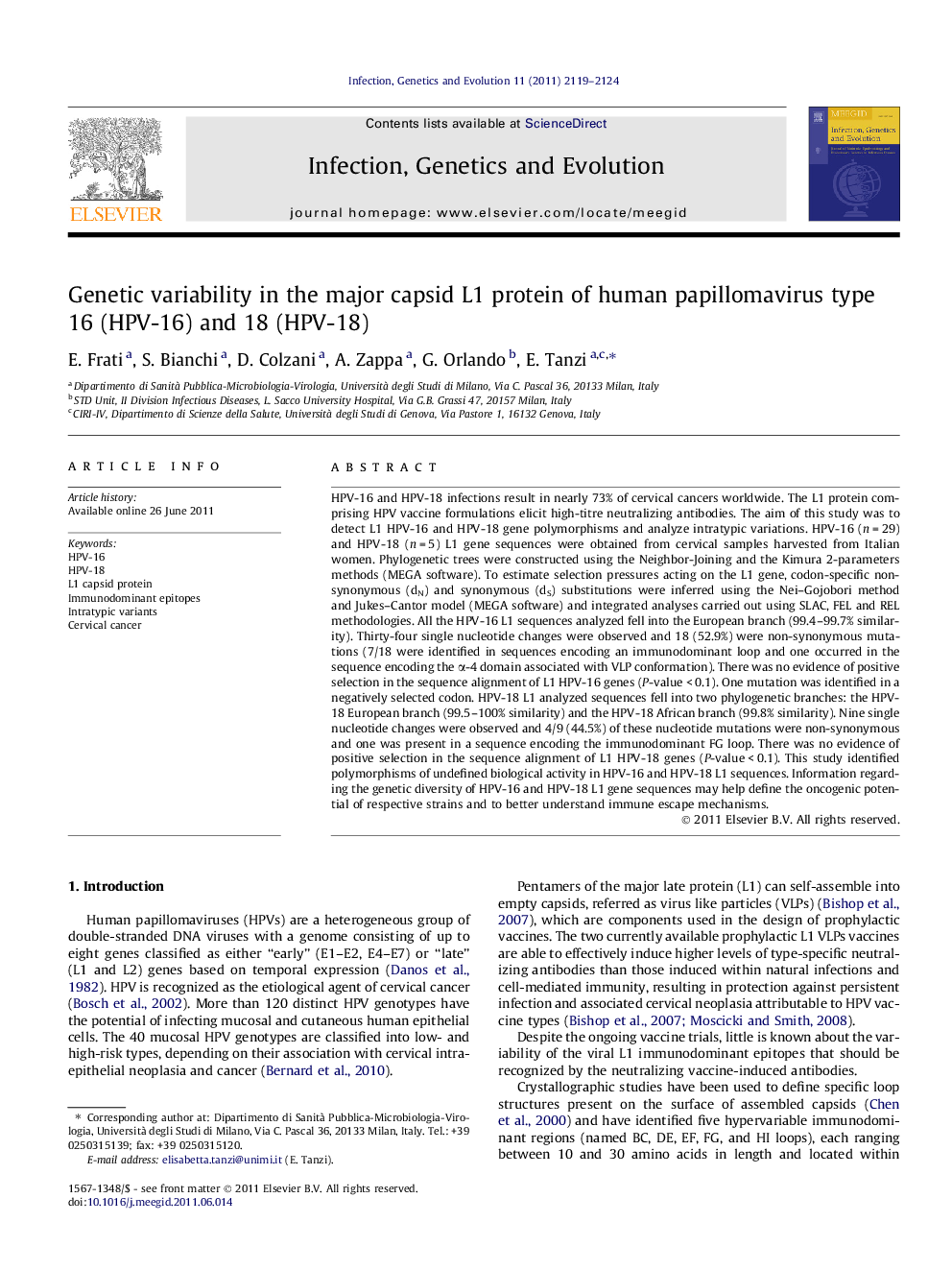| Article ID | Journal | Published Year | Pages | File Type |
|---|---|---|---|---|
| 5911675 | Infection, Genetics and Evolution | 2011 | 6 Pages |
Abstract
HPV-16 and HPV-18 infections result in nearly 73% of cervical cancers worldwide. The L1 protein comprising HPV vaccine formulations elicit high-titre neutralizing antibodies. The aim of this study was to detect L1 HPV-16 and HPV-18 gene polymorphisms and analyze intratypic variations. HPV-16 (n = 29) and HPV-18 (n = 5) L1 gene sequences were obtained from cervical samples harvested from Italian women. Phylogenetic trees were constructed using the Neighbor-Joining and the Kimura 2-parameters methods (MEGA software). To estimate selection pressures acting on the L1 gene, codon-specific non-synonymous (dN) and synonymous (dS) substitutions were inferred using the Nei-Gojobori method and Jukes-Cantor model (MEGA software) and integrated analyses carried out using SLAC, FEL and REL methodologies. All the HPV-16 L1 sequences analyzed fell into the European branch (99.4-99.7% similarity). Thirty-four single nucleotide changes were observed and 18 (52.9%) were non-synonymous mutations (7/18 were identified in sequences encoding an immunodominant loop and one occurred in the sequence encoding the α-4 domain associated with VLP conformation). There was no evidence of positive selection in the sequence alignment of L1 HPV-16 genes (P-value < 0.1). One mutation was identified in a negatively selected codon. HPV-18 L1 analyzed sequences fell into two phylogenetic branches: the HPV-18 European branch (99.5-100% similarity) and the HPV-18 African branch (99.8% similarity). Nine single nucleotide changes were observed and 4/9 (44.5%) of these nucleotide mutations were non-synonymous and one was present in a sequence encoding the immunodominant FG loop. There was no evidence of positive selection in the sequence alignment of L1 HPV-18 genes (P-value < 0.1). This study identified polymorphisms of undefined biological activity in HPV-16 and HPV-18 L1 sequences. Information regarding the genetic diversity of HPV-16 and HPV-18 L1 gene sequences may help define the oncogenic potential of respective strains and to better understand immune escape mechanisms.
Related Topics
Life Sciences
Agricultural and Biological Sciences
Ecology, Evolution, Behavior and Systematics
Authors
E. Frati, S. Bianchi, D. Colzani, A. Zappa, G. Orlando, E. Tanzi,
